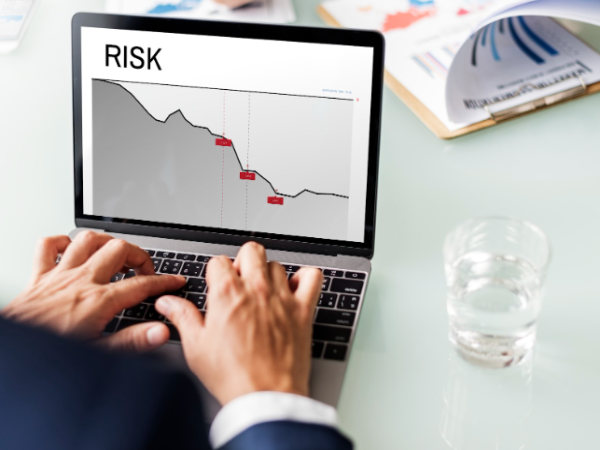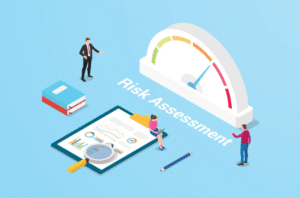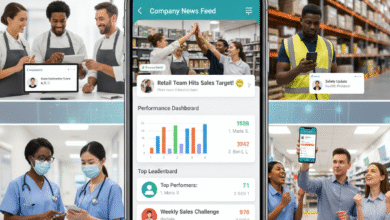How to Map Risks From RMF Into Quality Control Checkpoints and Acceptance Criteria

Introduction
Effective risk management takes a proactive and preventive approach to identifying potential threats and determining suitable responses that support sound business decisions. While many organisations focus on minimising risks, risk management also applies to opportunities—helping businesses assess which possibilities align with their goals.
Companies that consistently refine their risk management programs benefit from improved decision-making, greater success in meeting objectives and stronger security resilience. In the present dynamic environment, risks continue to diversify and multiply. Therefore, having an adaptable and structured risk management is essential.
This blog explores key fundamentals of risk management and provides practical insights into building and optimising a program that protects assets, enhances performance and supports long-term organisational growth.
RMF Steps

Here are 6 essential RMF steps for a foolproof risk management system for your organization:
Risk Identification
The first step involves identifying risks that could affect organisational goals. Through discussions with management and stakeholders, risks are documented. A risk register records potential threats, identifies risk owners, outlines mitigation plans, and assigns scores for structured future tracking and analysis.
Risk Assessment
This step includes the likelihood of occurrence of a risk and its potential impact. Scores are assigned on a three- or five-point scale, allowing prioritisation. A 3×3 or 5×5 risk matrix visualises relationships between likelihood and impact. This is one of the most valuable tools in a risk professional’s arsenal as it helps in quantifying data.
Controls Mapping
Once risks and threats are analysed, organisations map existing controls. Any uncovered or inadequately mitigated risks require new control designs. This ensures all identified threats are properly addressed which helps in improving the organisation’s ability to minimise vulnerabilities and enhance operational resilience.
Budget and Resource Allocation
Organisations must allocate limited resources widely for effective risk management. Using the risk register and risk scores, the management directs funds toward priority risks, balancing cost and impact. Annual evaluations ensure resource allocation aligns with changing business goals and emerging threats.
Risk Mitigation
Mitigation involves developing and executing action plans for open risks. Strategies may include installing security patches or obtaining insurance. The four treatment options are acceptance, transfer, avoidance and mitigation-all documented in the risk register for ongoing review and adaptation.
Monitoring, Reporting and Reviewing Risks
In the final stage, organisations continuously monitor risks, mitigation progress and risk scores. Regular committee meetings ensure updates reach leadership. Lessons learned from past incidents strengthen future risk management, maintaining an adaptive and proactive organisational risk posture.
Quality Control Plan vs RMF Steps: Important Checkpoints

Here is how you can create a quality control plan that aligns well with your risk management framework:
Inspection of Raw Material
Aligning identifying risks with product lifestyle stages is essential. Inspection of each batch is essential to ensure compliance with approved specifications. This step helps prevent defects from entering production, reduces variability and ensures that suppliers maintain quality consistently. This helps aligning with quality objectives and reducing risks.
Translate Risk Categories into Quality Verification
Risks identified during production ensure that each stage meets defined quality standards. For instance, high-risk components require stricter inspection and testing protocols. This way, identified risks are proactively mitigated through targeted quality controls which helps maintain product reliability through various stages of production.
In-Process Quality Monitoring
Continuous monitoring during production ensures that each stage meets defined quality standards. Critical parameters such as temperature during storage and transport of a product, dimensional accuracy and many other factors should be tracked in real time. Detecting deviations early-on helps minimise rework and avoid defects, maintaining consistent product quality.
Prototype Quality Evaluation
Before mass production, prototypes are thoroughly evaluated to ensure they meet design intent, fulfill performance requirements and safety standards. This checkpoint validates whether the process can consistently produce quality outcomes or not. It helps identify design or material flaws early, reducing risks and costly production errors.
Final Product Testing
Under a comprehensive quality control plan, the finished product undergoes comprehensive testing against functional and safety criteria. This final validation confirms that all quality and compliance requirements are met appropriately before release. Testing may include stress, endurance or trials to ensure longevity and reliability of the final product.
Compliance Verification to Update Quality Standards
Periodic compliance checks ensure that all processes and products meet regulatory and industry standards. Audit findings and test results must help continuous improvement efforts, update quality benchmarks and procedures. This keeps the organization aligned with changing trends and legal requirements.
Labeling and Documentation Accuracy Check
Prior to shipment, labeling, packaging and documentation, a final review is essential to confirm accuracy and completeness. Ensuring that serial numbers, product details and regulatory remarks are correct prevents miscommunication, recalls and compliance breaches. This step upholds accountability and customer confidence in the final product.
The Bottom Line
An effective risk management plan requires leadership and stakeholder buy-in, proper application of risk steps, strong documentation and realistic execution. Leadership support ensures adequate resources usage and consistency. Maintaining a current risk register adds accountability which helps in risk identification through RMF which are mapped into quality control checkpoints. Leveraging risk management software enhances collaboration, centralises documentation and ensures cohesive and actionable risk oversight.
Frequently Asked Questions (FAQs)
What are the 4 pillars that support the risk management framework?
The 4 pillars that support a risk management framework are constant supervision, consistent monitoring and control, timely interventions and treatment and lastly, victim safety planning.
What are the 4 P’s of a risk management framework?
A risk management framework is based on 4 P’s, namely, predict, prevent, prepare and protect. These are the 4 objectives that a risk management framework aims to fulfil.
What are the 4 stages of managing risks?
The step-by-step process of a risk management framework includes identifying risks, assessing the risk, treating the risk and monitoring and reporting a risk.
What are the four pillars of a quality control plan?
The 4 pillars of a quality control plan are customer satisfaction, continuous improvement, having a fact-based management process and mutual respect for people.
Which ISO mentions requirements for quality control?
ISO 9001 is a globally recognised quality management system. It helps organizations to satisfy customer requirements and meet regulatory demands. Consequently, performance improves and operational efficiency is maintained.



